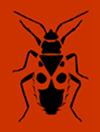The proteins involved in larval colouration in the cuticle and haemolymph of two strains of Antheraea pernyi (Lepidoptera: Saturniidae)
IF 1.2
3区 农林科学
Q2 Agricultural and Biological Sciences
引用次数: 0
Abstract
The proteome profiles of the cuticle and haemolymph of two strains of the Chinese Oak silk moth A. pernyi, with cyan and yellow coloured bodies, were compared in order to identify the differentially expressed proteins (DEPs) that determine the differences in the colouration of the two strains. A total of 324 DEPs, including 124 up-regulated and 200 down-regulated proteins, were identified in the cuticles of the cyan and yellow coloured individuals, and 286 DEPs including 79 up-regulated and 207 down-regulated proteins in the haemolymph of the cyan and yellow coloured individuals. Several DEPs associated with the colour of larvae of A. pernyi were screened, including an ommochrome-binding protein, juvenile hormone esterase, protein yellow, L-dopachrome tautomerase yellow-f2 and fumarylacetoacetase, the expression levels in the cuticle and haemolymph of the yellow larvae were higher than those in the cyan coloured larvae, indicating their possible roles underlying the colouration of the yellow larvae of A. pernyi.两株柞蚕表皮和血淋巴中与幼虫着色有关的蛋白质(鳞翅目:柞蚕科)
本文比较了两种体色为青色和黄色的柞蚕蛾的角质层和血淋巴的蛋白质组谱,以鉴定决定两种体色差异的差异表达蛋白(DEPs)。在青色和黄色个体的角质层中共鉴定出324个dep,其中上调124个,下调200个;在青色和黄色个体的血淋巴中共鉴定出286个dep,其中上调79个,下调207个。结果表明,与中华绒螯蟹幼虫颜色相关的DEPs包括一种同色结合蛋白、幼体激素酯酶、蛋白黄、左旋多巴胺自变性酶黄-f2和富马酰乙酰酶,黄色幼虫表皮和血淋巴中的表达量高于青色幼虫,表明它们可能在中华绒螯蟹黄色幼虫的颜色中起作用。
本文章由计算机程序翻译,如有差异,请以英文原文为准。
求助全文
约1分钟内获得全文
求助全文
来源期刊
CiteScore
2.30
自引率
7.70%
发文量
43
审稿时长
6-12 weeks
期刊介绍:
EJE publishes original articles, reviews and points of view on all aspects of entomology. There are no restrictions on geographic region or taxon (Myriapoda, Chelicerata and terrestrial Crustacea included). Comprehensive studies and comparative/experimental approaches are preferred and the following types of manuscripts will usually be declined:
- Descriptive alpha-taxonomic studies unless the paper is markedly comprehensive/revisional taxonomically or regionally, and/or significantly improves our knowledge of comparative morphology, relationships or biogeography of the higher taxon concerned;
- Other purely or predominantly descriptive or enumerative papers [such as (ultra)structural and functional details, life tables, host records, distributional records and faunistic surveys, compiled checklists, etc.] unless they are exceptionally comprehensive or concern data or taxa of particular entomological (e.g., phylogenetic) interest;
- Papers evaluating the effect of chemicals (including pesticides, plant extracts, attractants or repellents, etc.), irradiation, pathogens, or dealing with other data of predominantly agro-economic impact without general entomological relevance.

 求助内容:
求助内容: 应助结果提醒方式:
应助结果提醒方式:


